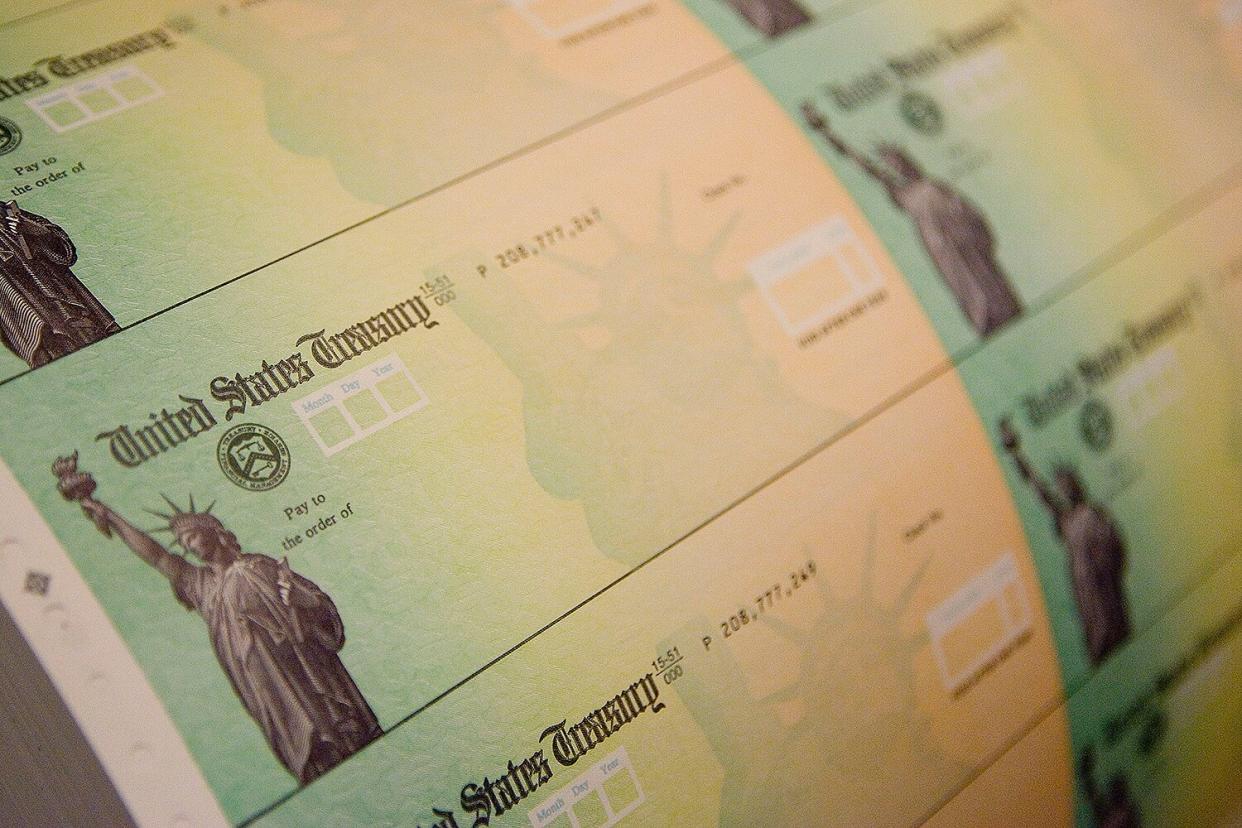Haven’t Received Your Stimulus Check Yet? Here’s How to Check Your Status

Jeff Fusco/Getty Stimulus checks
It's a year into the COVID-19 pandemic, and millions of Americans are just days away from receiving a third stimulus payment — while some already have.
Payments of about $1,400 are coming following the passing of a $1.9 trillion COVID-19 stimulus bill from President Joe Biden last week. The new checks follow previous payments of $1,200 and $600, which millions of Americans received in the past year.
Those who want to check on the status of their payment can visit the IRS' "Get My Payment" tool, which was set up during the first round of checks last year.
Upon clicking the "Get My Payment" button, users will be asked to enter their social security number or individual tax number, their birthday and their address.
At that point, they should be redirected to a page that says "Payment Status," which will let users know when they should expect their money.
If for some reason a pop-up appears that reads "Payment Status Not Available," that means one of three things: the IRS has not yet processed the payment, the IRS does not have enough information to issue the user a payment, or the user is not eligible for a payment.
RELATED VIDEO: 'The Same Deal That Barack and I Made': How Joe Biden and Kamala Harris Are Working Together
Anyone making less than $75,000 per year, or couples making less than $150,000 combined, are eligible to receive full payments of $1,400.
Dependents in families who earn less than $150,000 combined are also eligible for checks, and the IRS will refer to an individual's most recent tax return, including for 2020 if already filed, to determine income eligibility. Unlike the first two checks, dependents do not need to be under 17 years old to be eligible.
Individuals making between $75,000 and $80,000 will still receive a check, but it will be smaller than $1,400, and those making more than $80,000 will not get a check at all.
RELATED: The Next COVID Stimulus Checks: What You Need to Know
"Even though the tax season is in full swing, IRS employees again worked around the clock to quickly deliver help to millions of Americans struggling to cope with this historic pandemic," IRS Commissioner Chuck Rettig said in a statement. "The payments will be delivered automatically to taxpayers even as the IRS continues delivering regular tax refunds. We urge people to visit IRS.gov for the latest details on the stimulus payments, other new tax law provisions and tax season updates."
The IRS said the first batch of payments will be sent by direct deposit, and that some recipients got their payments as early as Friday. More batches will be sent in the coming weeks, and some will be mailed as a check or debit card.

